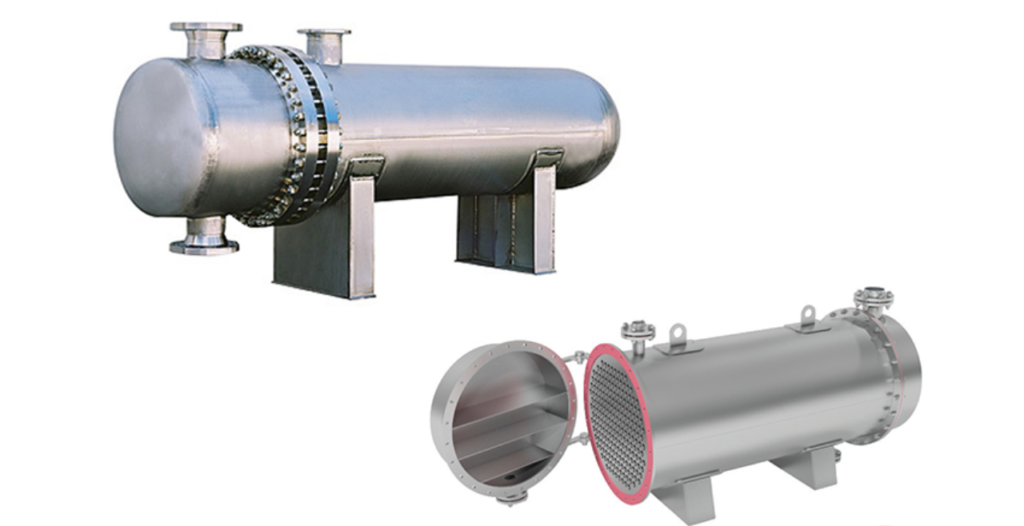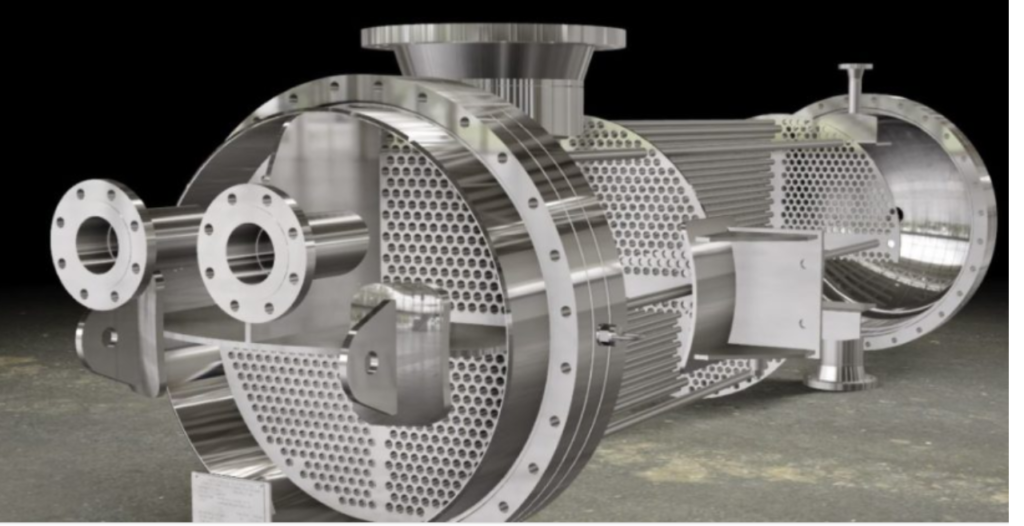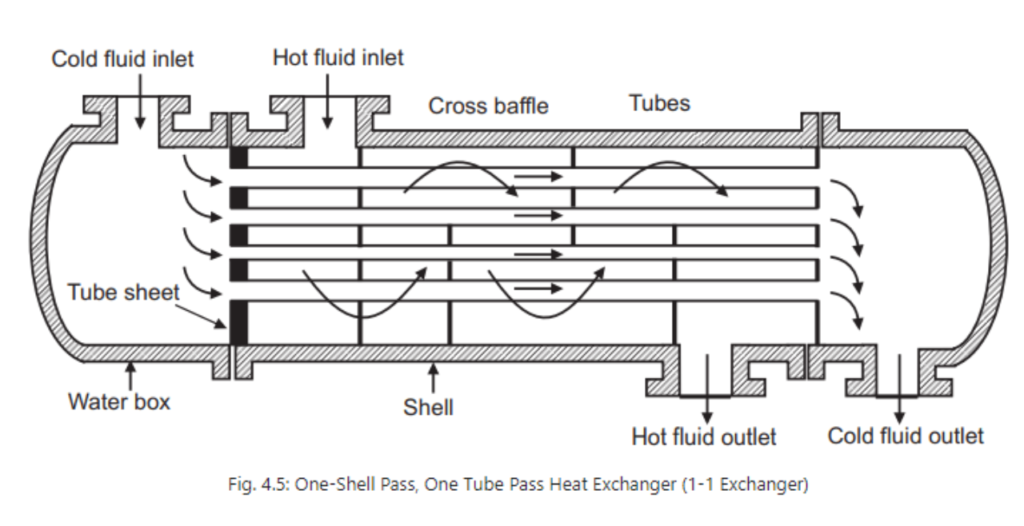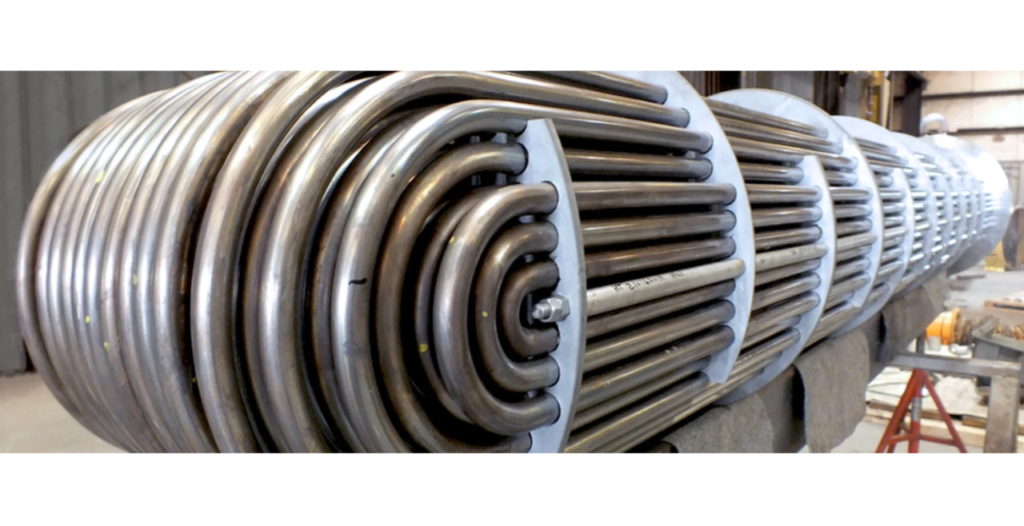Heat Exchangers
Shell & Tube Heat Exchangers
Shell & tube heat exchangers are a common type of heat exchanger used in various industries to transfer heat between two fluids while keeping them physically separated.
These heat exchangers consist of a cylindrical shell with a bundle of tubes inside. The working principles of shell & tube heat exchangers involve the following key aspects:
Design: The shell is the outer cylindrical component, and it contains a bundle of smaller tubes. The two fluids, often referred to as the hot fluid and cold fluid, flow through these tubes in a counterflow or parallel flow arrangement.
Heat Transfer: Heat is transferred from the hot fluid to the cold fluid through the tube walls. The hot fluid enters the heat exchanger through an inlet, flows through the tubes, and heats the tube walls. As a result, the heat is conducted through the tube walls and transferred to the cold fluid flowing on the other side.
Flow Paths: The two fluids may flow in either a counterflow or parallel flow arrangement. In counterflow, the hot and cold fluids flow in opposite directions, which typically results in higher heat transfer efficiency. In parallel flow, both fluids flow in the same direction, but heat transfer efficiency is usually lower.
Baffles: Baffle plates inside the shell are used to direct the fluid flow and enhance heat transfer by creating turbulence. They prevent direct fluid flow through the entire length of the shell.


Advantages:
High Heat Transfer Efficiency: Shell & tube heat exchangers offer high heat transfer rates, making them suitable for a wide range of industrial applications.
Versatility: They can handle high pressures and temperatures, making them suitable for a variety of process conditions.
Reliability: Shell & tube heat exchangers are robust and durable, with a long service life.
Ease of Maintenance: They are relatively easy to clean and maintain, and individual tubes can be replaced if necessary.


Disadvantages:
Size and Space: They tend to be larger and require more space compared to some other types of heat exchangers, which can be a limitation in some installations.
Cost: Shell & tube heat exchangers can be more expensive to manufacture and install compared to some alternative heat exchangers.


Applications: Shell & tube heat exchangers are used in various industries and applications, including:
Chemical processing: Heating and cooling of process fluids.
Petrochemical industry: Condensing and vaporizing various fluids.
Power generation: Cooling of steam in power plants.
Oil and gas industry: Cooling of lubricating oil and natural gas processing.
Refrigeration and HVAC systems: Heat transfer in air conditioning and refrigeration systems.

Summary: Shell & tube heat exchangers are versatile and reliable devices used for efficient heat transfer between two fluids while keeping them separate. They find applications in a wide range of industries due to their high heat transfer efficiency, versatility, and ability to handle various process conditions. While they have advantages such as high efficiency and durability, they can be relatively large and costly, which should be considered when selecting a heat exchanger for a specific application.


 Sales & Marketing:
Sales & Marketing:  Service Supports:
Service Supports:  Website:
Website: 